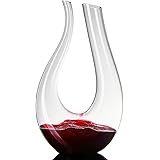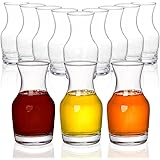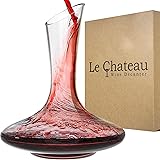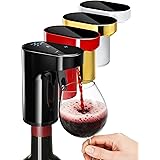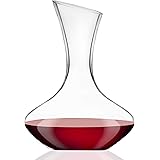Essential Home Winemaking Equipment for Beginners: Building Your First Cellar
Aspiring vintners often encounter a significant hurdle. Identifying the correct tools is crucial. The journey into home winemaking can seem daunting initially. However, assembling a foundational equipment kit is more accessible than anticipated. This guide, complementing the insightful video above, simplifies the selection process. Crucial winemaking equipment is discussed here. This ensures a confident start to your fermentation journey.
The Initial Fermentation: Primary Fermenters
Primary fermentation requires a specific vessel. These are often called “buckets” by many. They are typically 6 to 7-gallon food-grade plastic containers. Sufficient headspace is paramount within these vessels. Wine actively ferments, producing significant CO2 and foam. Without adequate space, a “volcano” effect can be experienced. This results in considerable mess.
These basic buckets, despite their simple appearance, are indispensable. They are used for the initial, vigorous stage of fermentation. Procuring a primary fermenter need not be expensive. Used options are frequently found on Craigslist, often priced around five dollars. New units, when purchased from winemaking supply sites or Amazon, usually range closer to fifteen dollars. The critical factor remains its food-grade certification. A tight-sealing lid is not even required during primary fermentation. A simple covering to prevent fruit fly contamination suffices. This is due to robust CO2 production.
Key Winemaking Instruments: Hydrometer, Thermometer, pH Meter
Understanding the Hydrometer
A hydrometer is arguably the most vital measuring tool. This is true for the novice winemaker. This triple-scale instrument quantifies the specific gravity of the must. It also indicates potential alcohol content. The sugar percentage, known as Brix, is also shown. Without this initial reading, the final alcohol by volume (ABV) cannot be accurately predicted. Consistent measurements are fundamental. These are needed throughout the fermentation process.
The hydrometer is immersed directly into the wine for a reading. Every winemaker, regardless of experience, is advised to possess one. These essential devices are inexpensive. They typically cost six to seven dollars. Investing in a reliable hydrometer is a small but critical step. It leads towards consistent, quality wine production. Its role in process control cannot be overstated.
Temperature and Acidity: Thermometer and pH Meter
Temperature control is another critical aspect. This is needed for successful winemaking. A laser thermometer provides quick readings. Non-contact temperature readings of the fermenting wine are obtained. Fermentation temperature significantly impacts yeast health. It also affects flavor retention. While not strictly the first purchase, its utility becomes apparent quickly. It aids in consistent batch replication. Cold fermentation, for instance, is often employed. This preserves delicate aromatic compounds.
The pH meter offers a practical assessment of wine acidity. A ten-dollar consumer model may not match laboratory accuracy. However, it provides a crucial “ballpark” figure. This reading helps determine if acid adjustments are necessary. They are needed for stability and taste. More sophisticated titration methods exist for precise pH measurement. Nevertheless, this accessible tool serves well for initial evaluations. Proper pH management is key. It prevents spoilage and enhances flavor profiles.
Carboys, Bungs, and Air Traps: Safeguarding Your Wine
Carboy Selection: Glass vs. Plastic
Following primary fermentation, wine is transferred to a carboy. This is also known as a secondary fermenter. These vessels, available in glass or plastic, are designed. They are for the slower, quieter phase of fermentation and aging. Glass carboys are heavy when full. However, they offer excellent visibility. They are less prone to scratching. This ensures easier and more thorough sanitation. This is a significant advantage in long-term wine contact.
Conversely, plastic carboys are lighter and less fragile. This mitigates the risk of catastrophic breakage. However, plastic can scratch. This creates potential harbors for bacteria. Used carboys represent significant savings. They are often found for ten to fifteen dollars. Look for them at yard sales or on Craigslist. Brand new units, depending on size, retail for twenty-five to thirty-five dollars. This makes used options attractive. They are good for the budget-conscious winemaker.
Bungs and Fermentation Locks
Securing the carboy involves a bung and a fermentation trap. This trap is commonly called a bubbler. The bung creates an airtight seal in the carboy’s neck. The fermentation trap, inserted into the bung, allows CO2 to escape. It prevents ambient air from entering the wine. Air, the primary enemy of wine, causes oxidation. This leads to off-flavors and spoilage. These inexpensive components are vital. They protect the wine during its vulnerable aging period.
Two common trap designs exist. There is the S-trap and the cup-style trap. The S-trap, preferred by many, retains water more effectively. This reduces the risk of drying out. If an S-trap partially dries, air ingress is less likely. This is compared to a cup-style trap. These small, yet crucial devices, cost only a few dollars. They provide peace of mind. They maintain an anaerobic environment for the aging wine.
Moving and Packaging: Racking Canes, Bottle Fillers, Wine Thieves
Racking Canes: The Art of Siphoning
Transferring wine from one vessel to another is called racking. This process necessitates a racking cane. This tool facilitates siphoning. It moves wine while leaving sediment behind. Most racking canes incorporate a protective tip at the bottom. This feature prevents the suction of undesirable lees. It ensures a clearer wine. Several sizes are available. These cater to different transfer speeds.
Plastic racking canes are common. However, stainless steel versions offer superior durability. While slightly more expensive at ten to twelve dollars, a stainless steel cane is a lifetime investment. This is true for the dedicated hobbyist. A 5/16-inch diameter cane is often recommended for bottling. It allows for a controlled flow. This prevents overfilling and minimizes splashing. Larger half-inch canes facilitate faster bulk transfers.
Bottle Fillers and Wine Thieves
A bottle filler attaches to the racking cane. This simplifies the bottling process. Basic, non-spring-loaded models are often preferred. These allow wine to flow by simply inserting the filler. It stops when lifted. Spring-loaded versions require manual pressure. This makes multitasking during bottling more challenging. The simpler design allows for greater efficiency. This is when filling numerous bottles.
A wine thief is used to extract small samples. These samples are for tasting or testing. Glass versions are aesthetically pleasing but fragile. Metal ones offer durability. While specialized wine thieves exist, a standard turkey baster can serve. It is an interim solution for beginners. These instruments are not always cheap. They are convenient for monitoring wine progress. This is done without disturbing the entire batch.
Sealing Success and Documenting Your Journey
Corks and Corkers
Properly sealing bottled wine is crucial for preservation. Agglomerate corks are composed of cork particles. They are a cost-effective choice. They are often found at 100 for twelve dollars. Natural corks offer a classic aesthetic. However, they can be more prone to spoilage issues. Synthetic corks provide reliability against cork taint. This is despite a higher price point. The choice of cork often balances cost. It is balanced with desired longevity and presentation.
Two primary corker types are commonly used. There is the lever-acting (Portuguese or Italian) and the hand-operated corker. Lever-acting corkers, priced around sixty dollars, consistently seat corks cleanly and effectively. The cheaper, hand-operated models cost approximately thirty dollars. They often compress corks unevenly. They can also damage them, particularly natural corks. Investing in a robust lever-action corker ensures professional results. It also prolongs bottle aging potential.
The Essential Wine Journal
Despite common beliefs about memory, a detailed wine journal is indispensable. Critical details must be meticulously recorded. This includes yeast strains, fermentation temperatures, and aging duration. This journal serves as an invaluable reference. It allows winemakers to replicate successful batches. It also helps understand causes of less desirable outcomes. The impact of oak additions can be systematically tracked. Specific interventions are also noted over time.
Every conceivable detail should be noted. This includes initial Brix readings, pH adjustments, and racking dates. Tasting notes are also essential. When an older batch matures into an exceptional wine, the journal reveals the exact methods employed. This comprehensive record-keeping facilitates continuous learning. It refines winemaking techniques. It provides a tangible history of your winemaking endeavors.
Assembling the right home winemaking equipment lays a solid foundation. This is true for your hobby. From the primary fermenter to the final corker, each piece plays a role. It assists in the creation of quality homemade wine. Diligent record-keeping with a wine journal ensures success. Every batch contributes to your growing expertise. The initial investment in these winemaking essentials is quickly recouped. This is achieved through the enjoyment of your own unique vintages. Your journey into winemaking excellence begins with these fundamental tools.


